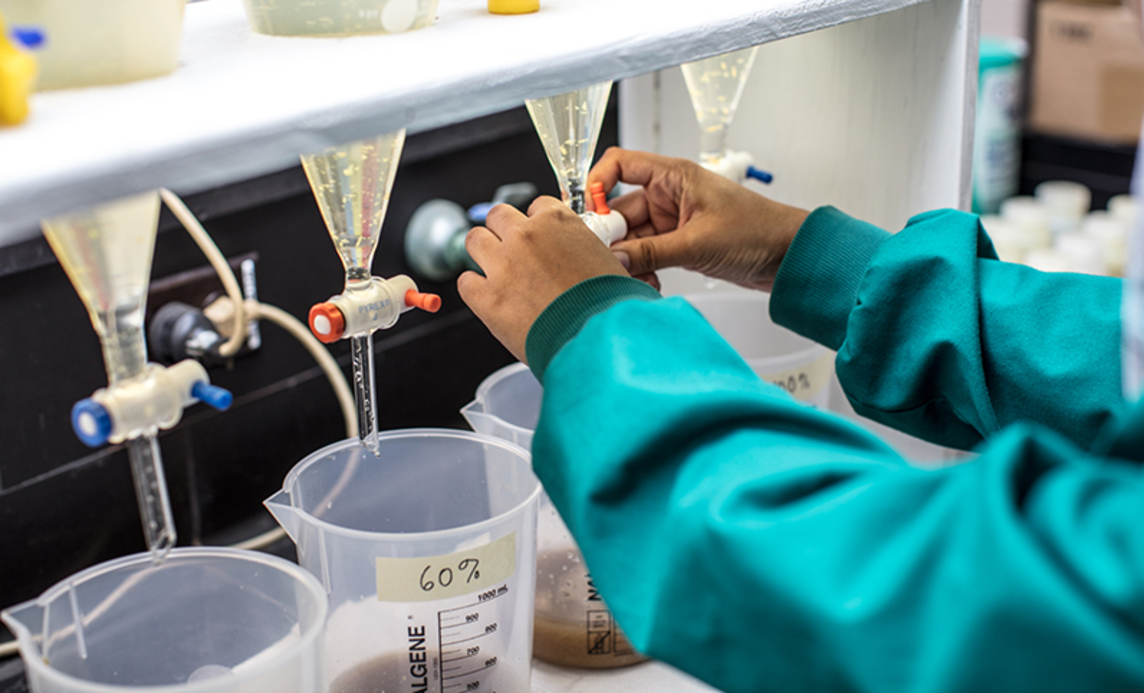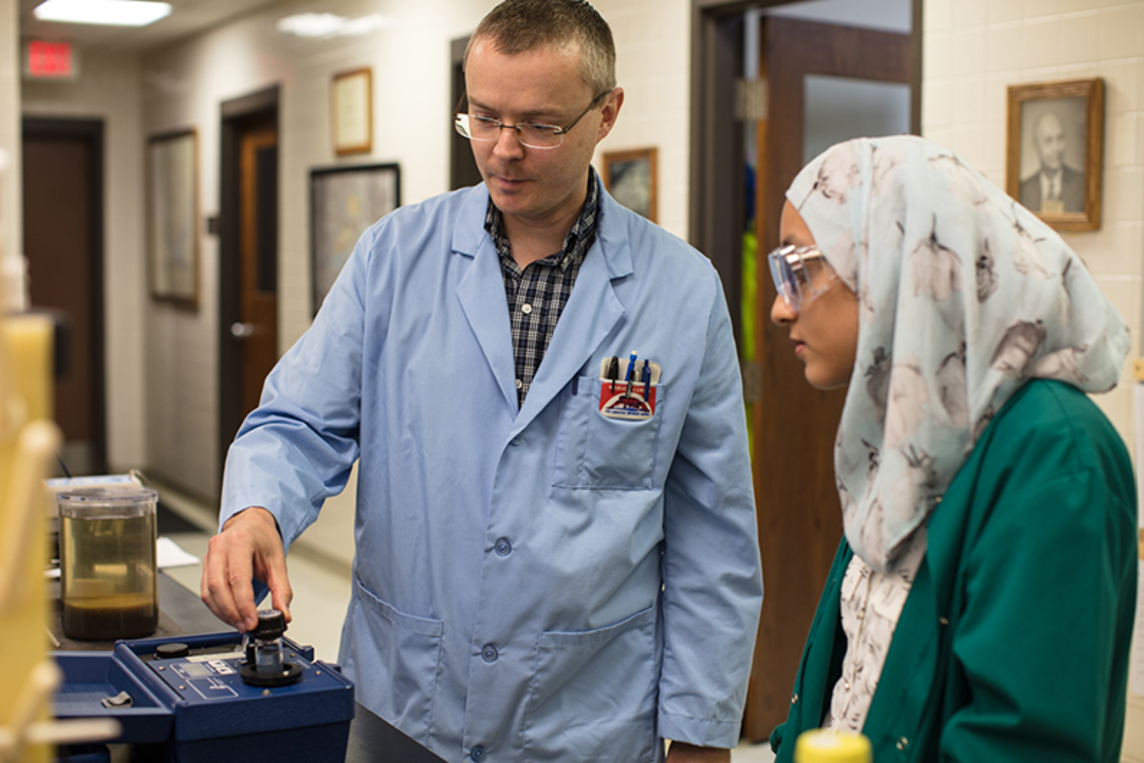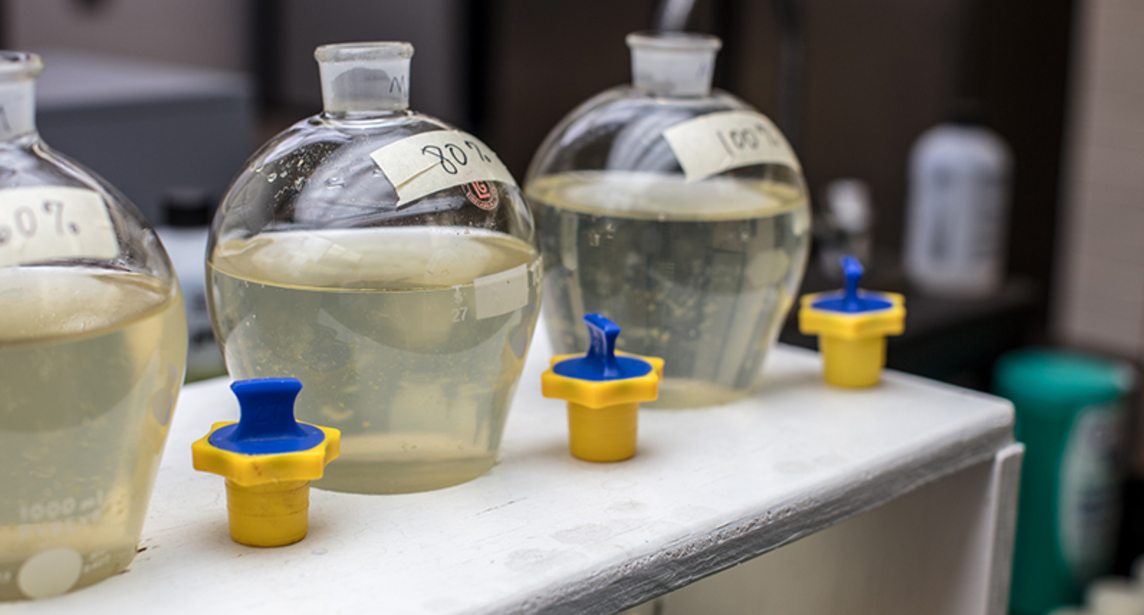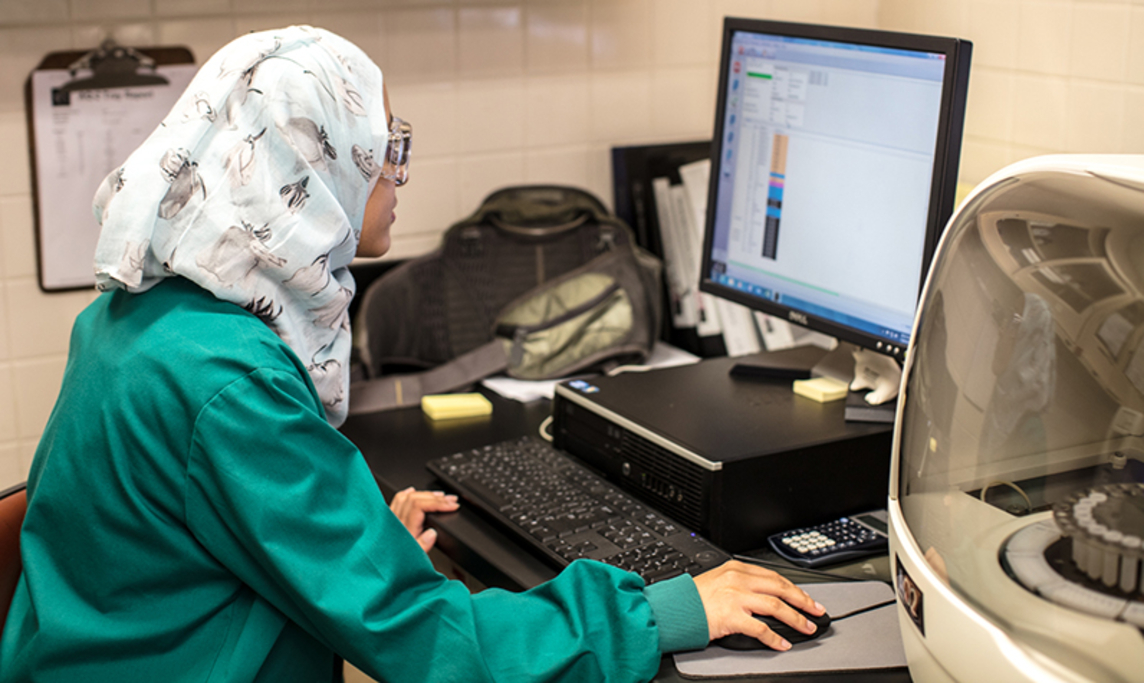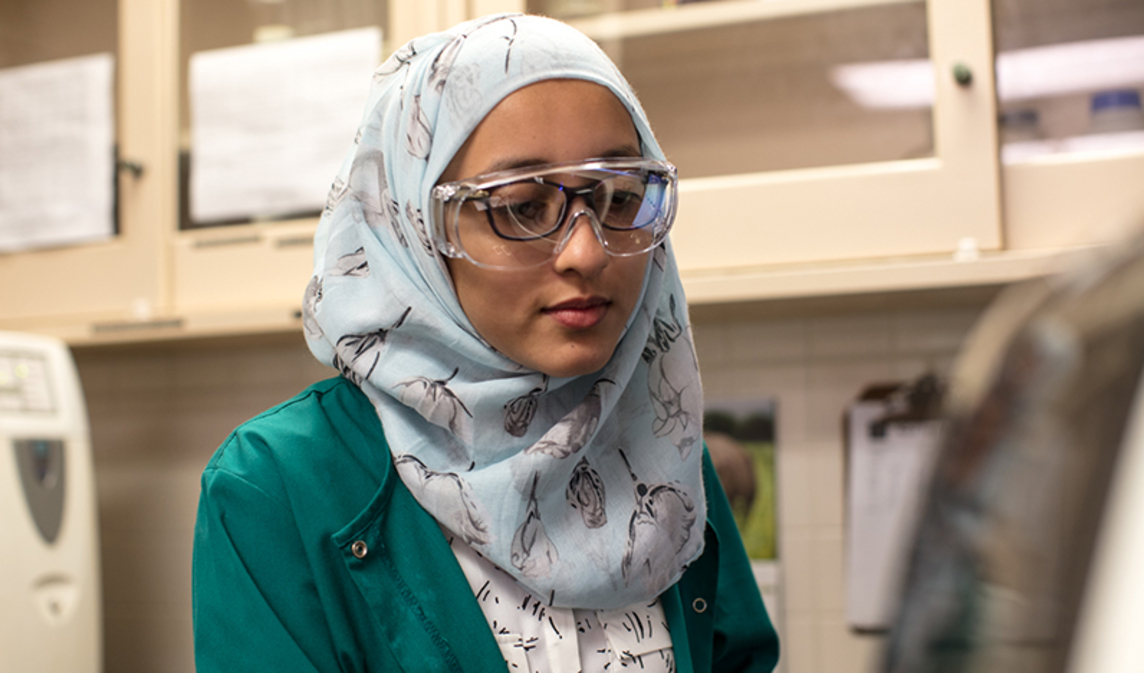Student and professor working together to decrease phosphorus levels in wastewater
Millikin University's Summer Undergraduate Research Fellowship Program pairs a student with a faculty member to perform in-depth research throughout the summer months. An example of Performance Learning, the research is one of the "graduate level" opportunities undergraduates experience at Millikin.
The Sanitary District of Decatur is working hard to clean greater Decatur's wastewater to return safe water to the Sangamon River, which requires a lot of work with chemistry. Needless to say, chemistry students can learn and grow from improving the water supply. Everyone else can benefit, too.
Dr. Kyle Knust, applied chemist and assistant professor of chemistry at Millikin University, and Saamia Salik, a sophomore pre-med chemistry major, in collaboration with Keith Richard, laboratory supervisor at the Sanitary District, are developing a method to decrease phosphorus levels in the wastewater treated at the Sanitary District of Decatur, something that will help both people and the environment.
"Due to local agricultural processing, Decatur is in a unique position," Knust said. "Phosphorus levels in water entering the Sanitary District tend to be 20 parts-per-million (ppm) or greater, which is quite a bit higher than the national average of 5 ppm."
Keith Richard noted, "This project came about because we had a need to conduct research on phosphorus removal and we also have wanted to build a collaborative relationship with the Chemistry Department at Millikin. We hoped to accomplish both goals so we reached out to Dr. Knust to see if this was a project that a student could work on over the summer. Saamia was interested and was able to get the summer undergraduate research fellowship grant to fund her work over the summer. Hopefully this will be just the first of many projects we can work on with Dr. Knust and Millikin students."
While phosphorus is a normal byproduct of corn and soybean processing, it is not good to have elevated amounts of phosphorus in water. For instance, high phosphorus levels can create toxic algae growth that affects drinking water supplies and harms aquatic life.
"We're trying to get down to 1 ppm phosphorus because I think rules are going to be enacted that require 1 ppm," Salik said. "We're trying to figure out which compounds, as well as different dosages, most efficiently remove phosphorus from wastewater."
Lowering phosphorus is a tricky task. There are many other variables to consider when trying to remove an element.
"We're trying to see which chemical precipitates phosphorus the best out of the water without causing any more problems," Salik said.
For instance, the water in Decatur also has higher chloride levels than average. Some chemicals could make those levels rise even more. They also need to keep the water suitable for living microorganisms that eat the phosphorus and dispel it. They also help in many other ways to help clean the water.
"They (the microorganisms) have a certain pH," Salik said. "We're testing the different influents so that we're not lowering the pH too much or raising it too much to kill the bugs."
Another factor that impacts the microorganisms is the biochemical oxygen demand. The two are also keeping a close eye on this property.
Additionally, they are measuring and trying to control how much precipitate, or solids, removing the phosphorus will create.
"The solids, referred to as sludge in the wastewater treatment industry, must be removed, which costs money—money that you and I are paying, since the Sanitary District is a taxpayer funded facility," Knust said. "The goal is to remove the most phosphorus, while generating the fewest possible solids. In other words, efficiency is key."
Salik is currently working with five different chemicals in a bench scale study as well as other instrumentation in the Sanitary District's laboratory. Throughout the summer, Salik has done all of her work at the Sanitary District instead of in a lab at Millikin.
"A project like this is right up my alley because there's a lot of analysis after the initial experiment," Knust said.
Each experiment occurs rather quickly, ending in only a few moments. The bulk of the work is performing various analyses and then examining the data. Salik, who wants to be a doctor, will continue to use these analytical skills in the future. This was her first major project.
"This work with the Sanitary District will hopefully result in real world impact," Knust said.
Once Salik completes this summer undergraduate research fellowship, there will still be more work to do in the Sanitary District that other students can possibly begin.
"I feel like this project also could be done year round during the different seasons," Salik said.
In different seasons, a new combination of chemicals enters the water supply, so students would need to determine which chemical works best with the changing composition of the wastewater.
